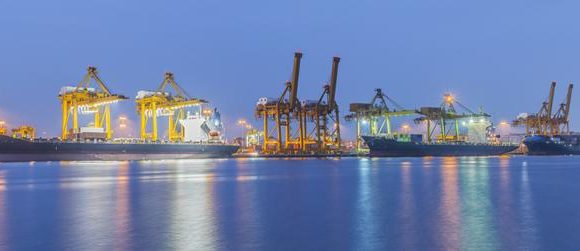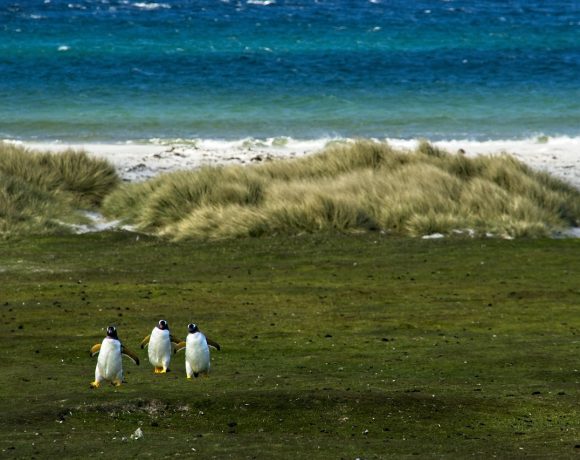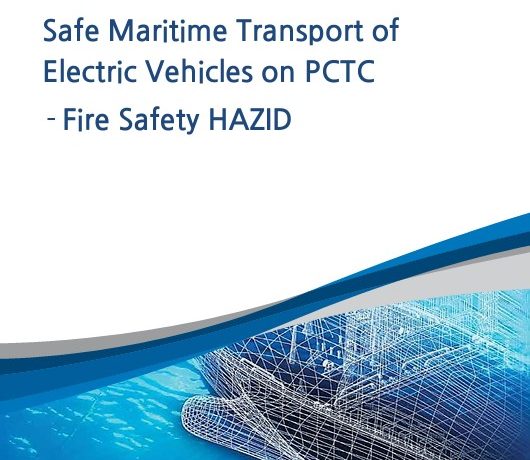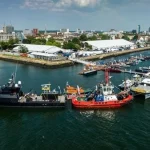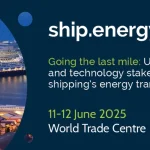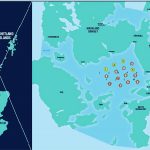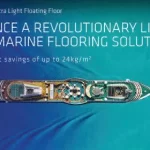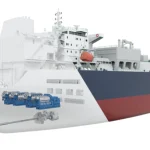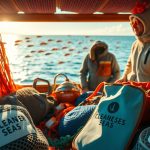Marine Ecology News Digest March 2025
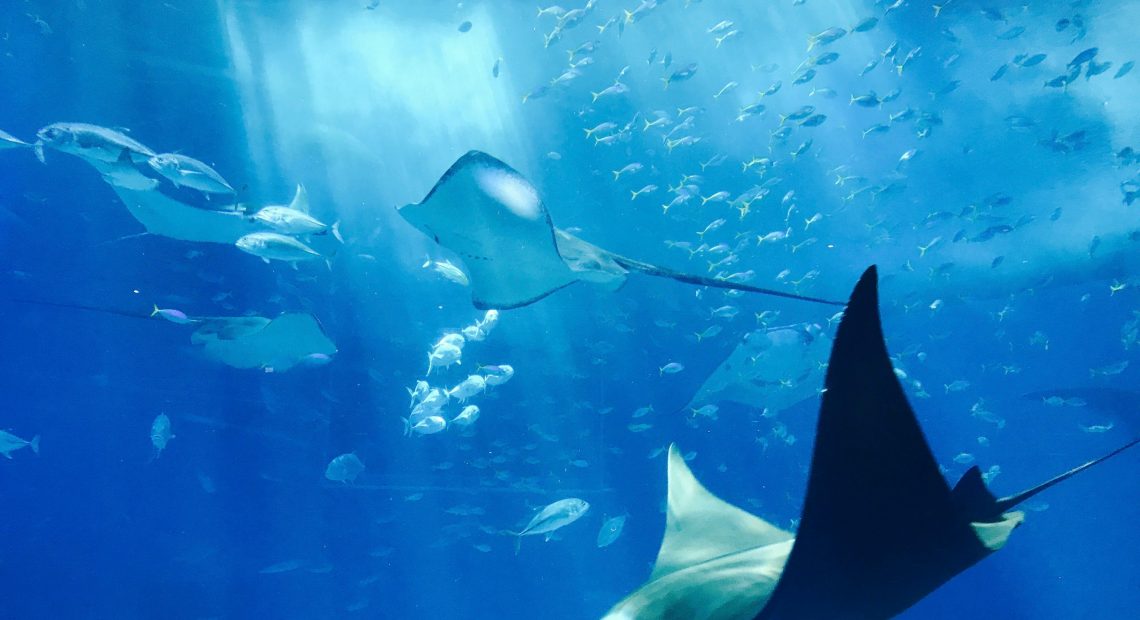
Have we ever seen such big changes in our oceans before? The World Meteorological Organization’s latest report is very worrying. Last year was the hottest ever, with carbon dioxide levels not seen in 800,000 years.
Ocean temperatures have never been higher, and sea levels keep going up. The Arctic sea-ice is at its smallest ever. These changes are not just numbers—they show big shifts in our oceans’ health.
This digest brings together the most important news about our oceans this month. It’s for those who work on the sea and need to know about climate, human actions, and sea life.
Even with these big problems, there are new ways to help our oceans. This edition shows both the big issues and the hopeful answers from scientists and leaders around the world. Each part looks closely at different parts of marine ecology, giving a full picture of what’s happening in our oceans.
Overview of Recent Developments in Marine Ecology
Recent studies in marine ecology show worrying changes in our oceans. The first quarter of 2025 has seen big changes in marine life. Thanks to new tech, scientists can track these changes more accurately than ever.
Key Environmental Changes
The World Meteorological Organisation’s latest report shows ocean heat content has hit new highs. 2025 has seen the highest levels in 65 years. The warming has sped up, with the last 20 years seeing a big increase.
Sea levels have also reached new highs, posing big challenges for coastal areas. Rising waters threaten habitats like mangroves and seagrass meadows. These areas protect against storms and help marine life grow.
Studies have found hotspots where marine life is changing fast. Coastal erosion and shifts in marine zones are happening. The maritime industry is watching closely, as these changes affect shipping and coastal plans.
Impact of Climate Change
Climate change impact on oceans have reached a critical point in 2024-2025. Ocean acidification is getting worse, making it hard for marine life to build their homes. This is a big problem for shellfish and corals.
The WMO report says warmer temperatures are causing more extreme weather. In 2024, 605 extreme weather events happened, leading to a record number of people displaced.
Marine heatwaves are getting more common and lasting longer. This is causing coral bleaching and disrupting fish migrations. Slow-growing species are struggling to adapt to these changes.
The maritime industry is feeling these effects. Shipping routes are changing, and coastal facilities need to adapt. New tech is helping to predict these changes, supporting ocean conservation.
Marine Biodiversity Concerns
Marine biodiversityis facing big challenges. Studies show worrying trends in many marine groups. Fish species are moving, with cold-water species moving north and warm-water species moving south.
Research shows amphibians are getting hit hard by global warming. This is linked to population declines. This shows how vulnerable temperature-sensitive species are in oceans and coastal areas.
Declines in key species like seagrasses and corals are causing big problems. These species are important for marine life. Losing them has big effects on food webs.
But, there are some good signs. Southeast Asia’s fisheries have shown they can be sustainable. This shows that small-scale fishing can work well. These successes offer lessons for managing marine resources better.
The maritime industry is now seeing biodiversity conservation as key. There’s more investment in tech to monitor and protect marine ecosystems. This helps make decisions that balance economic needs with protecting the environment.
Innovations in Marine Conservation Techniques
Today, marine conservation is all about two main things: advanced technology and local community efforts. These new ways are changing how we protect our oceans. They offer fresh solutions to old problems in managing marine ecosystems.
By mixing these methods, we get a better way to save our oceans. This approach tackles big global issues and small local ones.
Use of Technology for Monitoring
New tech is making it easier to watch over our oceans. The Woods Hole Oceanographic Institution is leading with two new ROVs. These will help us explore deeper and more flexibly than before.
Now, we can keep an eye on marine protected areas from space. This lets us spot illegal fishing and check if rules are being followed. It makes it easier to enforce the law.
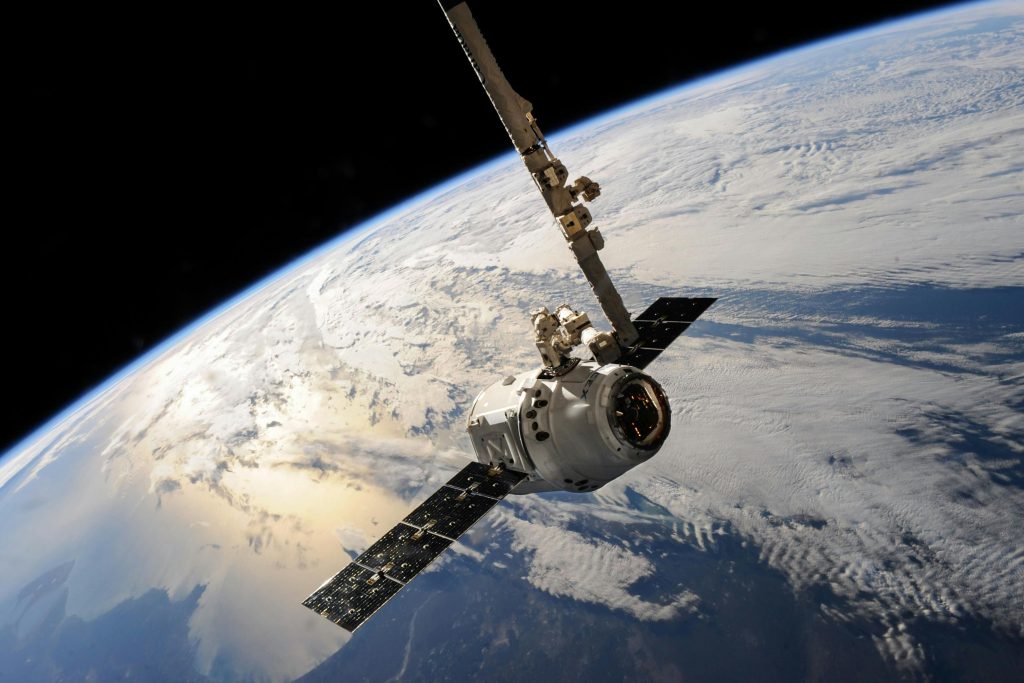
Environmental DNA (eDNA) sampling is another big step forward. It lets scientists find out what’s in the water without catching anything. This is great for finding rare sea creatures.
Adding artificial intelligence to these systems makes them even better. AI can quickly sort through lots of data. It helps us spot changes, pollution, or illegal fishing fast.
Community-led Conservation Initiatives
But tech isn’t everything. Community involvement is key to saving our oceans. Studies show that areas managed by locals do well for both the environment and people.
Coastal communities in the UK are starting their own conservation projects. They mix science with old ways of knowing the sea. This makes people care more about protecting it.
New ways to fund these local efforts are coming up. Blue carbon credits and tourism fees help keep these projects going. They make money from saving the sea and help the local economy too.
Working together is also important. Community groups and scientists team up to make better decisions. This way, we use both new science and old wisdom to protect the sea.
These local efforts are really helpful where governments can’t do much. By using old knowledge and new fishing ways, communities show us how to save the sea together.
Marine Protected Areas: Progress and Challenges
Marine Protected Areas (MPAs) are key in protecting our oceans. They are safe zones where marine life can thrive. As threats to the ocean grow, these areas are more important than ever.
MPAs offer different levels of protection. Some allow sustainable use, while others are fully protected. Their success depends on design, enforcement, and community support. There are both successes and challenges in their use.
Recent Designations in the UK
The UK has made big steps in expanding its MPAs. In early 2025, it announced several new designations. This move brings the UK closer to its goal of protecting 30% of its waters by 2030.
New MPAs include offshore sites important for seabirds and marine mammals. The UK also designated more Highly Protected Marine Areas (HPMAs). These offer stricter protections than standard MPAs.
HPMAs ban all extractive activities. They help us understand how marine ecosystems can recover. Unlike regular MPAs, they are untouched, allowing ecosystems to heal without human interference.
The process of designating these areas involved talking to many stakeholders. This shows a growing understanding of balancing conservation with using marine resources. The maritime industry helped shape these areas, bringing its knowledge of shipping and operations.
While progress is made, challenges remain, like enforcing rules in remote areas. New technologies, like satellite monitoring, are helping. They also open up chances for partnerships between industry and conservation.
Effectiveness of Existing MPAs
Studies on MPAs show mixed results. Success depends on design, resources, and enforcement. Well-designed and well-funded MPAs often help biodiversity and ecosystem recovery.
Some species’ biomass can increase by over 400% in MPAs. But, not all MPAs work well. Some are called “paper parks” because they’re not properly implemented.
Monitoring programmes give insights into how ecosystems recover. Some areas show quick improvements, while others take decades. Encouragingly, MPAs can also help fish populations in nearby areas.
This can benefit fishing communities economically. The maritime industry now sees MPAs as important for ecosystem health. This is vital as climate change affects our oceans.
This recognition is leading to more industry involvement in MPA management. New technologies help track vessels and monitor compliance. This makes enforcement better and encourages responsible operations.
Future Expansion Plans
Future plans for MPAs focus on systematic conservation planning. This aims to protect ecosystems while considering social impacts. There are plans to create protected areas that span across countries.
These efforts recognize that marine ecosystems and species don’t respect borders. New laws, like the High Seas Treaty, help protect biodiversity beyond national waters.
Attention is on creating connected protected areas. This helps species adapt to climate change. Unlike isolated areas, these networks can evolve with changing conditions.
The idea of dynamic protected areas is growing. These areas can change as needed, thanks to new monitoring technologies. This flexibility is key to managing our oceans effectively.
The maritime industry is working with these plans. It’s sharing data on shipping and operations. This collaboration marks a big change from past conflicts between industry and conservation.
Looking ahead, MPAs will need to be resilient to climate change. This forward-thinking approach will help protect marine life for the future.
Research Highlights: New Discoveries
Recent marine ecology expeditions have shown both alarming warnings and groundbreaking research. The start of 2025 has been very productive for marine scientists. They have made several important discoveries that help us understand ocean ecosystems better.
These findings are key for conservation strategies and sustainable maritime operations. They give us important insights.
Species at Risk of Extinction
Advanced monitoring programmes have found many marine species at risk of extinction. Deep-sea surveys using ROVs have shown worrying declines in some species. These species live in very limited areas.
These deep-sea communities are not well protected. They are very special to marine biodiversity. Their homes are easily damaged by environmental changes and human activities.
Coastal species also face extinction crises. Estuarine specialists are hit by pollution, habitat loss, and climate change. These changes harm their homes and make it hard for them to survive.
- Increasing pollution levels from land-based sources
- Accelerating coastal development destroying critical habitats
- Altered freshwater inputs due to climate change and water management practices
- Habitat fragmentation limiting genetic exchange between populations
Keystone species, which are very important in ecosystems, are declining. Losing these species can cause big problems in marine food webs. It could even lead to ecosystem collapse.
But, there is good news too. Conservation efforts have helped some species recover. The maritime industry has played a big role. They have reduced their impact and supported research that helps us understand vulnerable species.
Breakthroughs in Aquatic Research
The first quarter of 2025 has seen big breakthroughs in marine research. New genomic techniques have shown that marine populations are more connected than we thought. This changes how we think about managing marine ecosystems.
This discovery is very important for protecting marine areas. It shows how important it is to keep areas connected. This helps species to stay healthy and adapt to changes.
Animal tracking technology has also made big progress. Now, we can track marine species in ways we couldn’t before. This technology lets us see:
- Detailed movement patterns of previously unstudied species
- Habitat utilisation across different life stages
- Responses to changing environmental conditions
- Interactions with fishing gear and marine infrastructure
One of the most exciting things is how some marine organisms can adapt to warmer oceans. Coral reef fish, for example, can adjust to changes. This gives us hope that some ecosystems might be more resilient than we thought.
But, not all species can adapt. Keeping ecosystems healthy is key. Reducing pollution and overfishing helps marine ecosystems to cope with climate change.
The maritime industry is learning from and contributing to these research advances. They use vessel-based observation platforms to collect data. They are also changing their operations to protect sensitive habitats and species.
Ocean Pollution: Current State
Marine environments worldwide face a growing crisis due to ocean pollution, mainly from plastics. Despite efforts to reduce it, the problem is getting worse. Plastic debris and tiny particles are found everywhere, from the surface to the deepest parts of the ocean. This is a major challenge for ocean conservation in 2025.
The maritime industry is taking action to help. They are improving waste management on ships and supporting new, sustainable materials. These steps show that reducing marine pollution is possible and can be done in a cost-effective way.
Plastics and Microplastics
Studies have shown that plastic pollution is a global issue. Microplastics have been found in places thought to be untouched, like Antarctic ice and the Mariana Trench. This is a big problem.
The effects of plastic on marine life are serious. Research shows that it can harm growth, reproduction, and even change behaviour. It also affects the tiny organisms at the base of the food web.
Microplastics can move up the food chain, which is worrying. They can carry harmful chemicals that may harm humans who eat seafood. This is a new concern.
New technologies are helping to track microplastic pollution better. These tools show that the problem is even bigger than we thought. It’s a widespread issue.
Initiatives to Combat Marine Waste
Many efforts are underway to tackle marine waste. These include beach clean-ups and projects to remove plastic from ocean gyres. The best approach is to stop pollution before it starts.
Stopping pollution at the source is key. This includes better waste management, stopping debris in rivers, and finding sustainable alternatives to plastics. It also involves creating economic incentives for recycling.
The maritime industry is playing a big role in these efforts. They are improving waste disposal at ports and recovering lost fishing gear. These actions show that businesses can help reduce pollution.
International cooperation is also important. Countries are working together to address marine pollution. This includes using new technologies, changing policies, and changing behaviour. It’s a big job, but it’s doable with everyone’s help.
New technologies can help clean up the ocean, but they’re not enough. The best solutions combine technology with policy changes and incentives to reduce plastic use. This is the most effective way to tackle the problem.
Despite the challenges, these efforts are making a difference. They offer hope for a healthier ocean in the future. But, they need to be supported and scaled up to make a real impact.
Global Marine Ecosystem Trends
The balance of marine ecosystems worldwide is changing fast, mainly due to climate change. Long-term studies show big changes in where species live, how they group together, and how ecosystems work. These changes bring both challenges and chances for saving marine life and managing ocean resources.
Shifting Fish Populations
Changes in temperature are moving fish to new places. Studies show fish are moving 70 kilometres every decade to find cooler waters. This change affects the food chain and the economy.
This shift is hard for sustainable fishing because fish move across borders. When they enter new areas, they can upset the balance of local ecosystems. Islands are hit hard because their food and economy rely on local fishing.
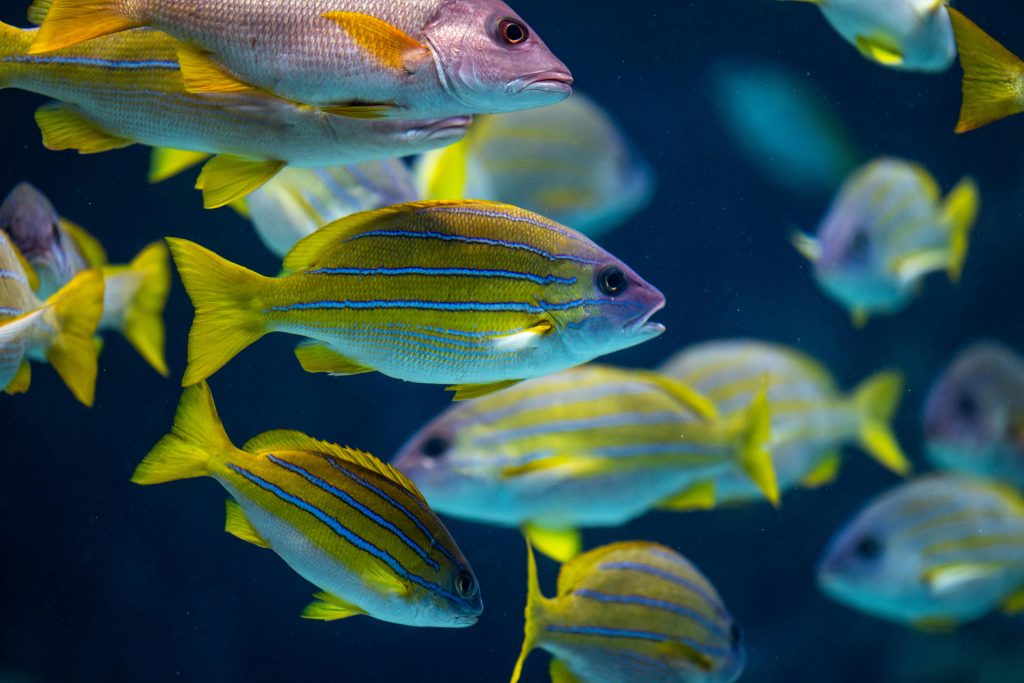
It’s worrying that predators and prey are not matching up anymore. Different species react to climate change impacts at different speeds. This can upset the balance of marine life.
The fishing industry is finding new ways to manage fish. They’re using:
- Flexible fishing plans to catch fish where they are now
- Advanced models to predict fish movements
- Special fishing gear to catch fewer non-target species
- Systems to monitor the ocean in real-time
- Agreements with other countries to manage shared fish stocks
Changes in depth add more complexity. Many fish move deeper to stay cool. This makes them harder to catch and can protect vulnerable fish.
Coral Reefs and Climate Resilience
Coral reefs are facing big challenges from warmer oceans. Heatwaves are causing widespread bleaching, which is getting worse fast. This is harder for corals to adapt to than ever before.
But, reefs are showing signs of resilience. Corals in very hot waters, like the Arabian Gulf, are surprisingly heat-tolerant. These corals could help protect and restore reefs.
Some reef fish can quickly get used to warmer waters. Fish from the Arabian Gulf are more tolerant of temperature changes than others. This shows that some reef life can adapt better than we thought.
The fishing industry is helping reefs by reducing harm and pollution. They’re using:
- Advanced navigation to avoid reefs
- Special moorings to prevent damage
- Systems to stop invasive species
- Reef nurseries and breeding programs
- Networks to watch for bleaching
These efforts can’t solve the main problem of climate change impacts. But, they can help reefs survive a bit longer. Mixing old wisdom with new science is key to finding ways to protect reefs and help coastal communities.
Policy Updates Affecting Marine Life
In the first quarter of 2025, big changes have come to marine ecosystems. The UK government and global bodies have introduced new measures. These changes show we must work together to protect marine life.
The rules for managing our oceans are changing. This is good for the health of our seas and the resources they hold.
UK Government Initiatives
The UK has a new plan for its oceans, the Marine Strategy 2025-2035. It sets big goals to make the sea healthier. This plan is a big step forward, aiming to manage the sea as one big system.
This strategy wants to make more areas safe for marine life. It plans to grow the size of protected areas and make them better.
The UK also has a new way to manage fishing, the Fisheries Management Framework. It’s all about fishing in a way that’s good for the sea. This includes better tracking and rules to protect fish.
People working in the sea are helping shape these policies. Their knowledge is key to making sure we can protect the sea and keep it working.
New technology is helping too. It makes it easier to track fishing and sell seafood that’s caught in a good way. This helps everyone involved.
The government also wants to plan the sea better. This means working out how to use the sea in a way that’s good for everyone. It’s all about making the sea a safer place for all of us.
International Agreements and Commitments
There’s a big push worldwide to protect the ocean. The World Trade Organization has made a big deal about fishing subsidies. This is a big win for the sea.
This deal will help reduce the pressure on fish. It shows the world is coming together to protect the ocean.
The High Seas Treaty is also moving forward. It’s making it easier to protect areas of the sea that are not controlled by any country. This is a big step for the ocean.
Groups that manage fishing are also changing. They’re being more careful because of climate change. This means they’re fishing in a way that’s better for the sea.
The sea industry is getting ready for these changes. Companies are using new technology and ways of working to meet these new standards.
Companies that lead the way in protecting the sea are being recognised. This is helping everyone work together to protect our oceans.
A report from the World Meteorological Organization has shown how fast climate change is affecting the sea. This report is pushing for even more action to protect the ocean.
Even the International Olympic Committee is now focusing on protecting the sea. They know that healthy oceans are important for sports and the planet. This shows how important protecting the sea is for many reasons.
Community Engagement in Marine Ecology
In the UK, communities are getting more involved in marine ecology. They’re doing this through new programmes that bring people together. This movement is making a big difference, helping us learn more about our oceans and why we need to protect them.
Citizen Science Projects
More and more people are joining in on marine science projects. Thanks to digital tools, they can help monitor our coastlines. This work helps scientists and supports efforts to keep our oceans clean.
Smartphones have changed how we collect data on marine life. People can take photos that scientists use to learn more. This makes science more accessible to everyone.
The maritime industry is also getting involved. They help with funding and resources for these projects. This partnership benefits both the industry and the environment.
These projects teach people a lot about our oceans. Those who take part learn more about marine life and why it’s important to protect it. This knowledge helps build a strong support base for ocean conservation.
Looking to the future, we expect to see more of this data being used in official research. This will make the work done by the community even more valuable for making decisions about our oceans.
Educational Programs
Marine education is changing fast, thanks to new technologies. Virtual and augmented reality are bringing the ocean into classrooms. This lets students explore underwater worlds they might not see in real life.
These experiences create a strong connection to the ocean. Students who get to see marine life up close are more likely to want to protect it. This is a powerful way to inspire action.
Hands-on experiences are also key. Students get to explore the coast and learn about marine life in a real way. These experiences shape their views and can influence their future careers.
Working with industry adds value to these programmes. It gives students a chance to see how marine science is used in real life. This helps them understand the many career paths available in ocean-related fields.
Programmes that include underrepresented groups are also exciting. They bring different perspectives to solving ocean problems. This is important for making sure everyone has a say in protecting our oceans.
It’s also important to include traditional knowledge in marine education. This approach enriches learning and helps protect marine biodiversity. It’s a way to honour the knowledge of indigenous communities and ensure a more complete understanding of our oceans.
Indigenous Knowledge in Marine Stewardship
In coastal areas worldwide, indigenous groups are showing how old wisdom can solve today’s ocean conservation problems. Their traditional ways of managing marine resources have kept marine biodiversity thriving while supporting their communities. The maritime world is starting to see the worth of these indigenous methods, which balance nature and human needs better than old systems.
Case Studies from Indigenous Communities
Coastal First Nations in British Columbia have shown how well traditional management works. They divide the sea into zones, keeping fish numbers healthy for centuries. Their methods include rules on when and how much to fish, and areas where fish can safely breed.
In the Pacific Islands, old fishing ways are being brought back with great success. In Hawaii, “kapu” bans help fish numbers grow back. Fiji’s “tabu” system also lets fish recover, while allowing people to fish nearby.
The Torres Strait Islanders of Australia use their deep knowledge of the sea to fish sustainably. Their rules limit how much they catch and protect certain species. This shows how traditional ways can protect the ocean.
Studies show that indigenous-led efforts do better than usual management in saving fish and helping communities. Areas managed by indigenous people have 40% more fish than unmanaged ones. This also helps with food and keeps culture alive.
Benefits of Traditional Ecological Knowledge
Traditional ecological knowledge (TEK) is very helpful for managing the sea today. It gives a long view, with insights from hundreds of years. This knowledge is key for understanding big changes in the environment.
This knowledge includes:
- Complex ecological relationships between species
- Fine-scale habitat requirements for marine organisms
- Early warning indicators of ecosystem change
- Sustainable harvesting techniques for specific coastal ecosystems
- Seasonal patterns affecting marine productivity
Indigenous knowledge looks at the whole picture, including nature, society, and culture. This fits well with today’s ecosystem management. It helps find solutions that meet many needs at once.
Working with indigenous knowledge can make the maritime industry better at protecting the sea. By respecting their rights and ways, we can learn more about the ocean. This helps both the sea and the people who depend on it.
Traditional knowledge is great for spotting early signs of trouble in the sea. These signs can help us act fast to protect the ocean. This knowledge is a big help in keeping the sea healthy.
Combining indigenous and scientific knowledge is a challenge but it’s promising. When done with respect, it leads to strong ways to protect the sea. These methods respect both the sea and the cultures that depend on it.
The Role of Research Institutions
Research institutions are leading the way in ocean conservation. They work together to better understand marine ecosystems. This teamwork is key to solving ocean problems.
Places like the Woods Hole Oceanographic Institution are creating new technologies. These tools help scientists study marine biodiversity in new ways. This is vital for protecting our oceans.
Collaborations in Marine Studies
Global research networks are setting up systems to monitor the ocean. They track everything from water conditions to marine life. This shared data helps both science and management.
The maritime industry is joining these efforts in many ways:
- They offer their ships for scientific research
- They fund marine conservation projects
- They use research to make their operations more sustainable
- They install automated sampling systems on their ships
- They join seafood sustainability programs

Working with the private sector has been very effective. It helps develop green technologies and practices. Both sides benefit from these partnerships.
Linking science with indigenous knowledge is also promising. This mix of knowledge helps us understand the ocean better. It’s very useful for coral reef protection efforts.
Notable Projects and Their Outcomes
Many research projects have made big strides in ocean science and management. These efforts show the power of working together to tackle big challenges.
The Global Ocean Observing System has finished its first five-year assessment. It has given us a lot of new information about ocean warming. This data is helping us predict future ocean changes.
The Deep Ocean Observing Strategy has set up new sensors in deep-sea areas. It has found unexpected life and functions in these areas. This knowledge is important for managing seabed resources.
The Clean Shipping Coalition’s research has shown how to cut emissions from ships. This work is helping to make the maritime industry more eco-friendly. It’s a big step towards ocean conservation.
Projects on nature-based solutions in coastal areas are also promising. They show that restoring mangroves and seagrasses can help biodiversity and protect coasts. These natural systems also support seafood sustainability.
These successes show that research institutions are more than just places of learning. They are key players in protecting our oceans. Through teamwork and innovation, they are finding practical solutions to ocean problems.
Looking Ahead: The Future of Marine Ecology
The world of marine ecology is changing fast. We face big challenges and chances ahead. The next years will be key to keeping our oceans and their creatures healthy.
Emerging Trends to Watch
Environmental DNA is changing how we check marine life. It lets us find out what species are in the water from just a sample. This is great for spotting invasive species and seeing how climate change affects the sea.
Artificial intelligence is helping scientists understand complex data. It finds patterns we might miss. Also, robots are helping us watch the oceans better. This opens up new ways for businesses and science to work together to protect the sea.
Call for Action and Advocacy
Scientists are speaking out about the need for action now. They say we can stop the worst if we act quickly. Making seafood sustainable is key, and some companies are showing it’s good for business too.
The shipping industry can help by using cleaner tech and supporting conservation. We need to get people involved to push for better ocean protection. This connects the health of the sea to our own well-being and wealth.
Looking ahead, we must think about the future. We owe it to the next generations to keep the oceans healthy. This guides us in tackling climate change and saving marine life.

